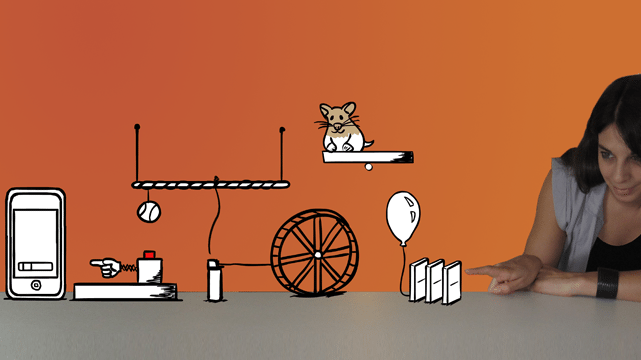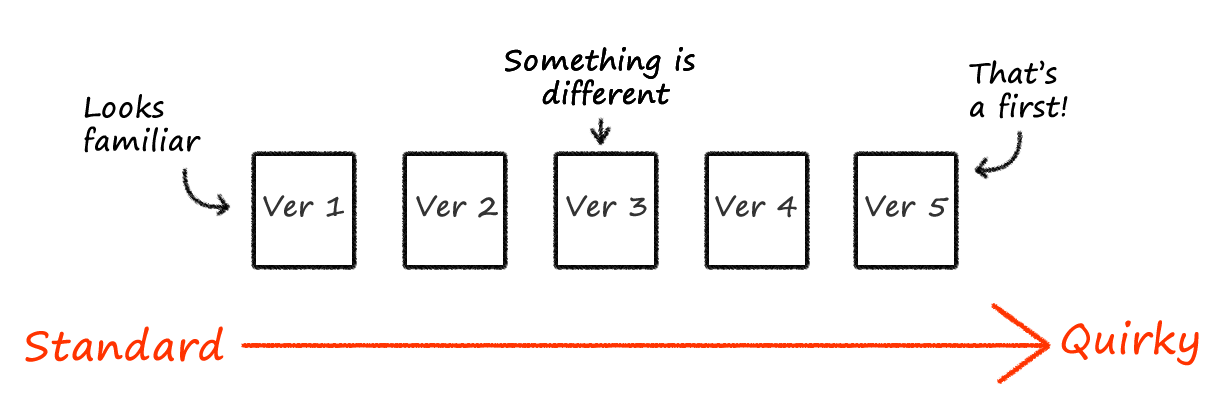Why Creativity Blocks Happen and 4 Ways You Can Overcome Them
This is a guestpost by Iris Shoor, co-founder and VP Product and marketing at Takipi, a new start-up leveraging Big Data technology to change how developers debug software in the cloud. It originally appeared on Lifehacker, more about Iris at the bottom of the post.

A few days ago I was telling someone about my startup company. “How did you come up with the idea?” he asked, and added very nicely – “you must be very creative”. This line always makes me smile, as I believe being creative is not a natural gift. It’s obvious to everyone that you have to work hard and exercise in order to be in good shape, and that it’s not enough to be smart to get a Ph.D. That’s how I feel about creativity – it’s not something that’s purely intuitive – It’s also plain hard work.
Every day I try not to think outside the box, but rather work hard on trying to live outside of it. I believe that creativity can be taught, and I know for a fact that I’ve become more creative over time. It’s not about finding the ‘one’ idea, but rather about using creativity to achieve everyday personal and professional goals. I use creative thinking to sell my product and ideas to people, design better and even to overcome personal obstacles, going outside my comfort zone.
Here are some methodologies I use to come up with fresh ideas.
Teresa Amabile, has been researching creativity for over 30 years, teaching MBA students at the Harvard Business School about managing for creativity –
“Creativity does have a reputation for being magical. One myth is that it’s associated with the particular personality or genius of a person. Creative thinking is a skill that involves qualities such as the propensity to take risks and to turn a problem on its head to get a new perspective. That can be learned.”
#1 Changing one part of the idea at a time
The biggest creativity challenge we face is that while we want to innovate and change, our brain actually prefers to stick with what it knows. Whether it’s a first draft or a five year old plan – once an idea has taken root it’s very difficult to think of another. Once we have a new look for the office in mind, a presentation flow or a web site design, it’s almost impossible to get it out. Try to think for a minute or two of a new design for Google.com – hmmm… almost impossible! New idea – Mr. Brain? No thanks, I already have one!
“When it comes to intelligence, the brain appears to be an efficient superhighway that gets you from Point A to Point B. But in the regions of the brain related to creativity, there appears to be lots of little side roads with interesting detours, and meandering little byways.”
Says Dr. Rex Jung, a research scientist at the Mind Research Network in Albuquerque.
A powerful tactic to overcome this is taking a project and breaking it down into smaller pieces. Once you stop looking at your project as a whole, things don’t look as obvious as they were before. Write down a list of all the elements in your current project – presentation topics, blog post paragraphs, web site elements and more. Then focus on one part at a time and change just that one. The most interesting thing about this tactic is that just dividing a project into a discrete list of elements will help ideas to start flowing. Once you have your list you can do wonders with it. Here are a few quick examples:
- Focusing on one part and changing it completely.
- Removing a part.
- Combining random parts.
I use this tactic when working on my product designs, marketing strategy and presentations.
Here’s a fun example of how it’s done, and the kind of ideas you can reach with it:


#2 Don’t start at the beginning
One of the most common breaking points for a project is not the finish line but rather the starting line, before the race even begins. We’ve all been there, postponing a new project day after day, week after week. When starting a new project most people approach it according to its natural order – writing the first paragraph of an assay, designing a website’s homepage. The first milestone is usually very challenging, and when faced with a big challenge we tend to give up.
When I notice that I drag my feet with a new project, I never start at the beginning. I find an anchor – a part of the project which is very standard or is technical in nature. It can be the ‘about me’ paragraph or the website footer, it can even be a line or a slide I’ve used before. From there I move on to the next part. It doesn’t have to be closely related to the first one, but again, one you can handle more easily. In a few relatively easy steps I can build a rough skeleton and from there all I have left is to connect the lines between the dots.
#3 Create a range of alternatives, from the standard to the extreme
Much like IQ tests, one can also take a creativity test. In one of the most common creativity tests people are asked to complete as many different figures as they can based on a simple graphic shape (such as an X shape or three lines). You can see some interesting results here. Here’s my take :

When your creativity needs to play the main role, It’s no longer about having the ‘right’ answer, but about providing a set of different answers to the same question. When you’re facing a difficult problem – try to create a number of different answers. This will help you solve it more quickly, and in a more creative way. Before you start a project or a part of it, draft 5-6 different alternatives. It might be 6 different ways to pitch the same idea, or 6 different design themes for a website. I make sure to prepare a list of all the alternatives before starting so I won’t get fixated. Now, let’s make things more interesting – try to create a range within your alternatives – the first one should be the most standard one you can imagine, with the last one raising an eyebrow or two.

Even if you end up choosing alternatives that are closer to the standard than to the extreme, after experimenting with quirky ideas, your ‘standard’ version will probably also change, and come more to life. On a personal note, the entire branding of my company was invented using this method. I started with a clean, typical startup branding and then expanded the range from the standard up to a fifth quirky alternative made of cartoon like monsters which represent the problems we’re aiming to solve. The monsters prototype worked great. I would have never reached that idea without forcing myself to think of this one last alternative.

#4 Get outside the box – into someone else’s
Try to list 10 cities.
Now try to list 10 cities that are close to your home town.
Easier, isn’t it? When we use constraints it’s usually easier to come up with more ideas. The way we think relies on connections – a certain smell can conjure an old memory, a name can bring up someone’s image. When we use constraints we trigger more ideas, and come up with more solutions. Even when there aren’t any constrains people tend to create them. When most people are asked to name 10 cities they’ll use some kind of connection between them – capital cities, cities I visited this year, etc…
So, in a way we’re never really outside the box, we simply move between boxes. One of my favorite creativity tricks is creating a set of constraints by placing myself in someone else’s box. Try taking an existing or a half baked project and rethink it in someone else’s shoes. If it’s a design project – how would it look like if it was designed by Google or maybe even by Starbucks? If it’s something you write – how would a certain writer or maybe a colleague sitting across the room would write it? You’ll soon find out that while your designs or text will be very far removed from your chosen style, bringing in a style constraint into the equation will spark your creative magic.
What is your experience when dealing with creativity blocks? Have you found any great techniques that helped you overcome them? I’d love your thoughts on this in the comments.

About the author: Iris Shoor is co-founder and VP Product and marketing at Takipi, a new start-up leveraging Big Data technology to change how developers debug software in the cloud. Previously, Iris was co-founder and VP Product at VisualTao, a Sequoia backed start-up which was acquired by Autodesk in 2009. You can follow her on Twitter @irisshoor and hit her up any time, she is a super nice person.
Try Buffer for free
140,000+ small businesses like yours use Buffer to build their brand on social media every month
Get started nowRelated Articles

As a self-proclaimed tools nerd, I’ve tested out many of the ever-growing list of AI productivity tools on the market. These are the ones I keep coming back to.

Looking for some low-lift ways to make yourself happier? Here's some of the best research that we've found on personal happiness.

Personal brand experts walked this writer through exactly how to switch up her personal brand — and offered some more general advice, too.